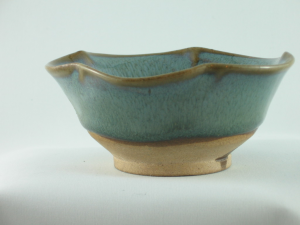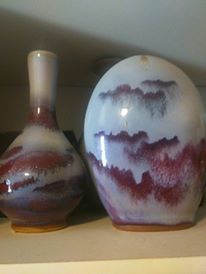
Henan is the centre most province of China and is the key intersection of North and South, East and West, as well as a key point along the path of the yellow river and one of the most important historical and cultural areas of China as a whole.
As a result, Henan has a great deal of accumulated cultural history which in modern times presents itself most conspicuously through the arts. Whether it is traditional water painting, calligraphy, opera, martial arts, or pottery (which we are discussing in this article), Henan still maintains a very strong relationship with its cultural history and is one of the last provinces to be touched by Chinese artistic modernity, which borrows heavily from modern Japanese, Taiwanese and Korean art aesthetics. Being that genuine Henan culture still exists in many places in a fairly pure form, it is important to catalogue what is genuine to Henan before it begins to gradually disappear and be replaced by neo-Chinese arts and culture (oddly, I have seen the beginning of this process taking form in the pottery world there within the last year or so and so now is really the best time for anyone interested in traditional Chinese culture to go to Henan and research before it all goes away).
Pottery in China has a long history and is often believed to go back at least 20,000 years, but the high era of Chinese ceramics occurred between the Tang and Song dynasties between 700-1200 AD or so. Tang porcelain is characterized by the gorgeous light blue, shiny porcelain commonly made in Jingdezhen in jiangxi province, but Song porcelain is represented by many diverse and special traditions. The Song dynasty was split into two major eras, Northern and Southern, with the Northern Song period taking place mainly in the city of Dong Jing (modern day Kaifeng). Dong Jing (eastern Capital) was the home of one of the most influential Chinese empires ever to exist and also gave birth to two unique and valuable styles of porcelain.
The first style, called Jun Ci, has the specialty of having three distinct types of glaze. The base glaze is black, which is high in lead and cannot be used for human consumption of food. The next glaze is light blue, which is not toxic and goes over the black glaze, making the porcelain safe to use. The final glaze is red, which is also not toxic and goes over the blue glaze. Most Jun Ci made in Henan today is a combination of blue and red glaze and many beautiful vases, cups, tea pots and other similar materials are made with this porcelain. The home of Junci is Yuzhou township, which is in the countryside outside of Kaifeng. Not only does Yuzhou maintain traditional Henan ceramics culture, but it also maintains the older, traditional name of Henan, which is “Yu.” Junci is a hugely popular style of porcelain in China and it is also made in 
many other kilns, but yuzhou still produces the most authentic Junci available.
The other famous style of porcelain from Henan is called Guanci, which is much more rare. While Junci was originally the type of porcelain enjoyed by wealthy families during the Northern Song dynasty, Guangci was kept back specifically for the emperor’s family. As such, the number of people who know how to make Guanci is very small and in modern Henan, almost non existent. After the invasion of the Manchurian armies and subsequent replacement of the Northern Song dynasty by the Jin dynasty, the Song moved to Hangzhou, Zhejiang province and began to produce pottery there in the Southern Song period. The porcelain made in the Longchuan kiln of Zhejiang is very similar to Guanci, but its overall quality and beauty is not comparable, since the traditional clay used to make Guanci is all located in Henan. Nonetheless, the Longchuan kiln produces the vast majority of modern day Guanci and as one of the best traditional kilns carrying ancient dynastic pottery today.
Regardless of what type of porcelain you like, it is of great value to take a trip to Henan to look at the traditional and largely family lineage produced porcelain in order to see something about an ancient culture that is still alive today in China.